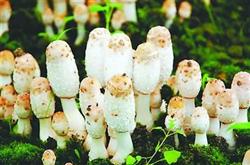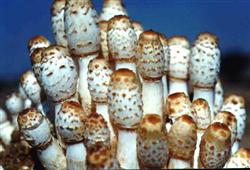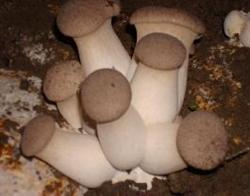Methods of harvesting and dry processing of Coprinus comatus

"when the Coprinus comatus is harvested at the right time, the fungus cap is not in bud, the fungus ring is about or just loosened, and when the mushroom bud is ripe, scrape off the soil and scale of the mushroom foot with bamboo slices. After harvest, rinse with clean water and drain quickly or dry in the sun for about 2 hours and process in time. If the bacterial ring is loosened or harvested after falling off, it will oxidize and brown in the drying process, and the bacterial cap will turn black and lose its commercial value. Drying is a key technology, the quality of baking directly affects the color, aroma, blossom shape and economic benefits of dry products. Zhang Fengying, a professional household in Hongzhi Village, Dongshi Town, Zhijiang City, Hubei Province, created a set of "New method of dehydration and drying of Coprinus comatus" according to the requirements of customers for dry products in the past three years, which met the export commodity standards after quality inspection. The main technical points are as follows: (1) drying facilities: 1. Kang room. 2. Dryer. (2) slicing and sieving: the fresh mushrooms picked and washed on the same day are cut from the bottom of the fungus ring to half of the mushroom feet with a long handle blade or stainless steel knife to form a whole mushroom shape connected by the bacterial cap and cut into two halves, separated according to size, dry and wet, the section is spread out on the bamboo screen, the large and wet mushrooms are discharged in the middle of the bamboo frame, and the small and dried mushrooms are discharged on the top layer, and the quality is poor at the bottom. (3) controlling temperature and dehumidification: (1) starting from 37 ℃, gradually rising to about 60 ℃, with a maximum of 65 ℃. The duration of the four drying processes of drying, dehydration, color fixing and drying is 16 to 24 hours. Mushrooms with high water content (picked in rainy days) take longer to dry, and vice versa. Note: the drying temperature should rise slowly, too fast will cause the cap to crack and blacken, and the quality will decline; when the temperature reaches 37 ℃, the mushroom lid naturally shrinks inward, can increase the curling degree, and the color is white, the quality is good. If it is baked in the room when it is less than 35 ℃, the cells in the mushroom continue to move, and the cover can not keep the shape, so the commercial value is low. (2) when the relative humidity in the baking room (machine) reaches 70% (which can be shown by the dryness and humidity meter), it is necessary to open the intake window and exhaust window for ventilation and dehumidification. when the humidity decreases, the air window is half open and half closed, that is, the intake and exhaust windows are fully open for about 4 hours, the middle is about 17 hours and half closed, and the double windows are fully closed in the last 2 hours. When the water content of the mushroom body is reduced to 12% and 13%, it becomes a dry product. Simple judgment method, with nail pressure mushroom cover, there is a hard feeling and slightly leave fingernail marks, the dryness is appropriate. If the water content is high, it is easy to mildew, while when the water content is low, the cap is easy to break. The dried products processed are immediately packed with a double-layer plastic tube film (1118010, 55.00, 0.49%), fastened to the opening of the film, and the coat is woven into a bag of 5 kg each, at a price of 300 yuan per bag.
- Prev

Imitating Wild cultivation techniques of Coprinus comatus
The growth temperature of imitating wild Coprinus comatus is between 10 ℃ ~ 24 ℃, and the mushroom is produced from March to June in spring and from September to November in autumn. If imitating wild cultivation in plastic greenhouse, seeds can be sown from October of that year to March of next year, mushrooms can be produced from November of that year to June of next year, and can be produced twice a year. Each cultivation cycle can produce 5-6 crops of mushrooms.
- Next

Master the key technology of Pleurotus eryngii to let Pleurotus eryngii produce more mushrooms in spring
First, to grasp the best mushroom production period of Pleurotus eryngii has been cultivated in Panjin, Liaoning Province for several years. The experience gained is that the most suitable period for producing Pleurotus eryngii in the local mushroom shed is from the beginning of March to the end of April in spring, from late September to early November in autumn, in the absence of heating facilities.
Related
- Fuxing push coffee new agricultural production and marketing class: lack of small-scale processing plants
- Jujube rice field leisure farm deep ploughing Yilan for five years to create a space for organic food and play
- Nongyu Farm-A trial of organic papaya for brave women with advanced technology
- Four points for attention in the prevention and control of diseases and insect pests of edible fungi
- How to add nutrient solution to Edible Fungi
- Is there any good way to control edible fungus mites?
- Open Inoculation Technology of Edible Fungi
- Is there any clever way to use fertilizer for edible fungus in winter?
- What agents are used to kill the pathogens of edible fungi in the mushroom shed?
- Rapid drying of Edible Fungi

